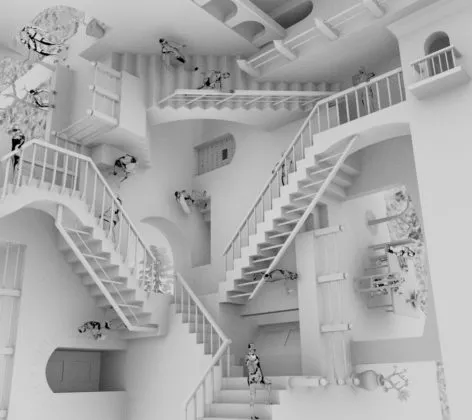In our age, the use of virtual and real categories is increasingly frequent and at the same time less powerful. Videogames, films, projects, Internet, computers and much more; the boundary between real and virtual becomes increasingly weaker and more intangible. Through the approach of the tools of the sociologists Lascoumes and Le Galès (2009) we will enter the world of rendering, the simulation tool par excellence.

The approach of the instruments
The approach of the instruments is a relatively new analytical approach that aims to analyze the instruments of governance, deconstructing their meanings, the choices that determine them and their implications. An instrument is any technical device that gives form and substance to public action (Monteleone and Mozzana, 2009), a sociological institution that governs and guides interactions and organizations. Their construction, which is taken for granted, in reality already underlies a large apparatus of choices and values from which they derive; they are not neutral devices but devices permeated by a high degree of standardization. This normality is carried out in the orientation of actions and decisions at best, and in the imposition of real standards of action and thought in the worst case. One of the strongest instruments with which we are used to interact and which risks being used in legitimisation and preservation of the political and technical "power" that produces them, is the use of numbers: they are elected as the only and infallible way of science, without analyzing the political/normative compromise that underlies their generation. Reality, through instruments, therefore, comes to lose the multiplicity of points of view, just as science finds in the evidence of number the only source of truth; in a world in which the possible loses relevance, the only action to be done is to describe (read prescribe) a natural process of evolution that has in the unavoidability its main reason to exist.
Rendering as a regulatory tool
Rendering is one of these tools that, if not well deconstructed, makes you forget your high standard. It generates a series of fictitious, predetermined and pre-packaged realities that, unlike abstraction, leaves no room for a multiplicity of possible points of view, but only asks to be accepted, effortlessly (de Leonardis, 2013). This is particularly evident in the real estate market and in the major urban transformation projects, in which models are erected before our eyes in which categories such as real and virtual lose their meaning. Images play a decisive role in rendering, exploiting advertising and marketing to attract new customers and investors; the seductive capacity of this form of communication suggests the idea of society's life as an accumulation of shows, i. e. the omnipresent affirmation of the choice already made in production and the consumption that is corollary of it (Debord, 1967). We are in the field of simulation, in the intricate world of simulacrums and hyper-reality that Baudrillard paints. The question arises: what role do we have in all this?